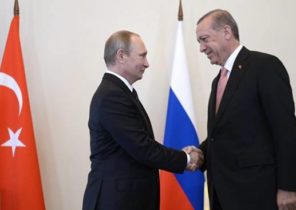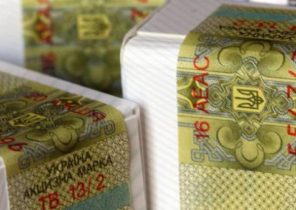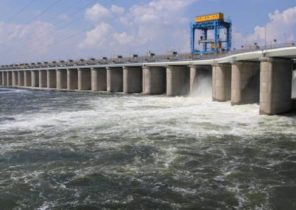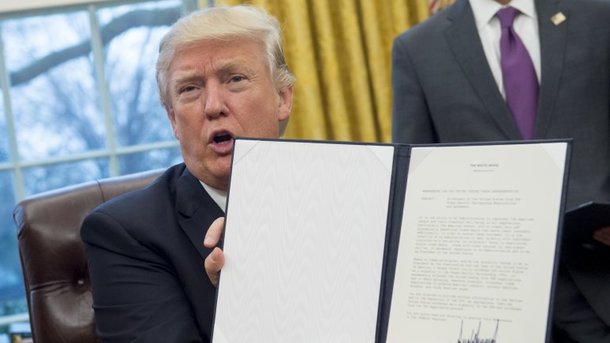
The US withdrawal from the TRANS-Pacific trade partnership (TPP; Trans-Pacific Partnership, TPP) is a unique event in world history, because the country withdrew from the agreement, the conclusion of which she persevered for about seven years.
At the same time, the decision of the American President Donald trump can not be considered unexpected, and not only because it is still during the election campaign promised to withdraw the country from the TTP immediately after his victory. The signing of the TTP was achieved by the administration of President Obama, but the mood in the U.S. Congress have clearly said that the Treaty will not be ratified.
From a contract out of US
The proposal to create the TPP as a free trade zone within the WTO was launched in 2003 with three countries: New Zealand, Singapore and Chile. In 2005, the initiative was joined by Brunei and the four countries signed an agreement on the establishment of TTP, which entered into force in 2006.
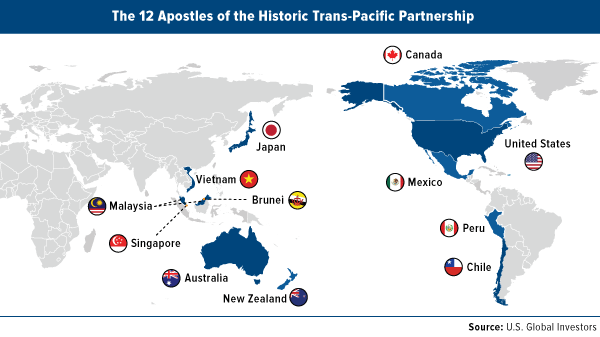
Two years the new organization actually existed only on paper. But in 2008, the idea of such a Union is interested in the United States, gradually giving it greater scale. Negotiations of potential participants was very long, but in the end, 12 countries: USA, Japan, Malaysia, Vietnam, Singapore, Brunei, Australia, New Zealand, Canada, Mexico, Chile and Peru, on 4 February 2016, has signed an agreement to establish a new partnership with the old name. The Treaty will enter into force after its ratification by all members (this aside for two years).
The US itself gave TTP a significant scale.
TTP involves the creation of a broad free trade zone in the Asia-Pacific region. The Obama administration considered this agreement as one of the main measures in the economic confrontation with China. Obama himself has repeatedly warned that the refusal of the TPP “would weaken the U.S. position in the region, as well as the ability to define the rules of global trade, based on American values and interests.” This partnership has supported a number of kupnik companies, such as Nike and WalmartStores, many medium-size businesses as well as owners of family farms.
According to critics of the agreement in the United States, the TPP leads to a reduction in jobs and wages of American workers. Also it was argued that the “terribly low” requirements for the country of origin of the product open, for example, possibility of delivery to USA vehicles from China due to the “screwdriver” Assembly in one of the TPP countries.
It should be noted that the document on the output from TTP trump signed after a meeting with the heads of the “industrial Committee” of the United States (Ford, DowChemical, Dell, Johnson&Johnson, LockheedMartin, Arconic, US Steel, Tesla, Corning, InternationalPaper), which discussed the issue of international investment business in light of the plans of the new President to stimulate job creation in the United States.
Possible fate of TTP
Now the TTP formally remain five countries — its founders under the agreement of 2005, and Japan, who had to ratify the Treaty in November 2016 Seven countries, the Treaty has not yet ratified.
The Prime Minister of Japan said that he expects to hold talks with trump as soon as possible: “I believe that the President of the United States recognizes the importance of free and fair trade, therefore, intends hard to explain the strategic and economic importance of the agreement.”
Australia began negotiations with Japan, New Zealand and Singapore about the possibility of continuing the project of TPP without the United States, in the format “12 + 1”. According to the Prime Minister, to abandon the project of Australia can’t, because it made certain promises for the labour market.
The Prime Minister of New Zealand hopes that the project will continue to exist with the remaining partners. The Minister of trade of the country reported that soon there will be a meeting of participating countries at the Ministerial level, which will be worked on options for further action.
Australia began negotiations with Japan, New Zealand and Singapore on the TPP without the United States, in the format “12 + 1”.
The trade Minister of Malaysia said: “regardless of the position of the new US administration on TPP, we will continue our contacts with our American colleagues in order to strengthen bilateral trade and economic ties, because the US is our third partner in terms of trade and the largest source of investment.”
Interest in possible accession to the TPP is showing Indonesia, it is possible to create the conditions for the accession of China. The assumptions about the TTP entry into the EU, but while this is highly uncertain.
Some experts say that a lot of agreement on the TPP was tied to the fact that the participants take themselves very high standards and open access to their markets in exchange for duty-free access to the largest market – the us. So the TPP without the United States is unsustainable.
Making the same changes to the Treaty would mean the denunciation, and the restart of negotiations will likely be buried TTP. Therefore, it can be argued that the contract in the format of 4 February 2016, will not enter into force, and partnerships that bring 40% of world GDP, will not.
Global implications
The Chinese leadership cautiously hinted that it may use the failure of the TTP, announced that supports “open and transparent economic arrangements in the region.” China itself has long offered to create a unified regional trade on the basis of their project — the regional Comprehensive economic partnership.
So step trump’s exit from the TPP goes into the hands of China. But the emphasis that the President makes on trade protectionism will not bring the Chinese use. In the world in General has serious concerns about the negative impact of the protectionist policies of individual countries in the international economy.
Trump in Principina like the format of multilateral trade agreements. He believes that his country will find it easier to get favorable terms in bilateral negotiations. It is therefore expected that in the near future it will formally notify Canada and Mexico of the desire to renegotiate the North American free trade agreement (NAFTA), which entered into force in 1994
Step trump’s withdrawal from the TPP goes into the hands of China.
Very vague prospects of another global agreement – the Transatlantic trade and investment partnership (TTIP) with the EU, which is considered as a complement to the TPP. Trump it is practically not mentioned, but the EU believes negotiations are frozen. Although Canada is in the process of ratifying the TTIP complement their trade agreements with the EU.
As for Ukraine, the success or failure of the TPP on us not directly affected: the volume of foreign trade with countries in the Asia-Pacific region is still small, besides our exports to mainly raw material, which is not subject to the rules of TTP. But the probability is that the result of the beginning of the process will change the rules and practices of world trade, and that it is advisable to be ready.
